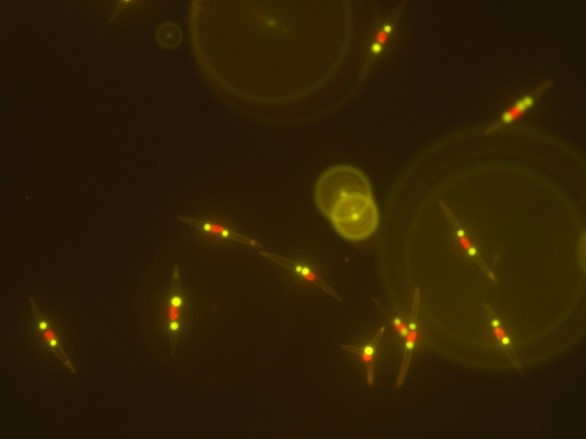When grown in the presence of light (phototrophy), microalgae have the ability to fix and convert CO
2 into organic molecules. They can also use mixotrophy, thereby increasing the productivity and quality of biomass in the presence of a carbon source. The industrial exploitation of microalgae without impacting on arable land could thus help completing the available resources for the energy and chemistry markets, while reducing environmental impact.
Several technological obstacles, however, limit the current use of microalgae, both in terms of biomass that can be produced per unit area and in terms of quality of this biomass (content of molecules of interest). It is therefore necessary to optimize the properties of these microorganisms in order to lower the production costs, which are still too high.
INRA, through its Biology and Plant Improvement Department (BAP), is interested in the construction of the qualities of plant products and in the different uses of plant biomass in green chemistry, notably by seeking to improve the metabolism of organisms. The BAP Department, aiming for an increased contribution to these new uses, has recently positioned additional research forces within our laboratory. This unit is characterized, in addition to its research of excellence, by a strong commitment to develop applied research programs and partnerships, such as with the Fermentalg company.

Phaeodactylum cells containing oil droplets (in yellow). Diatoms cells shown here are fusiform, except one, which is triradiate. The bright spots correspond to oil that accumulates inside cells. There are usually 2 droplets of oil per cell, located on both sides of the core. © Inra, Coline Mei, LPCV